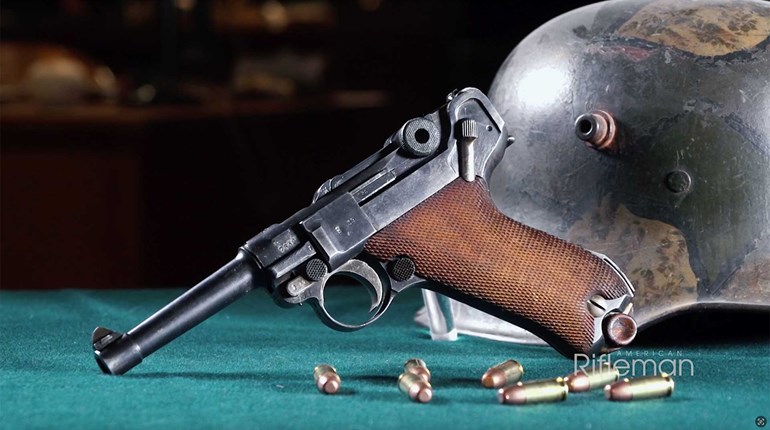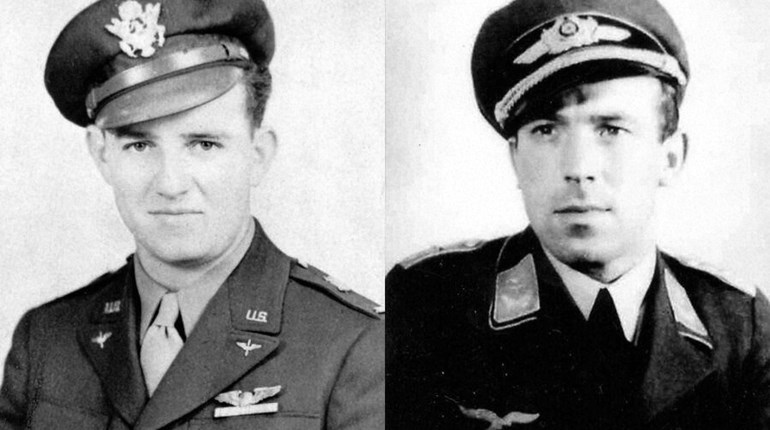
Walter Audisio was the principal figure of the Italian resistance movement in Milan and he operated under the nom de guerre “Colonel Valerio” for the sake of anonymity. On April 28, 1945 he left Milan with another communist partisan and drove north toward Lake Como. The day before, a column of German vehicles had been intercepted near the village of Dongo that included, among other high-ranking fascist leaders, none other than “Il Duce” himself: Benito Mussolini. Together with his mistress Claretta “Clara” Petacci, Mussolini had fled Milan on April 25 in an attempt to escape across the border into Switzerland, but that attempt failed when the partisans arrested the couple on the 27th.
News of the arrests quickly reached the General Command of all partisan units and an execution order was promptly issued. This is why Walter Audisio traveled to Dongo that Saturday afternoon. After reaching the village, Petacci and Mussolini were collected and then driven south to the Villa Belmonte in the village of Giulino de Mezzegra. They were forced to stand before the front gates of the villa as Audisio readied an esoteric French submachine gun he borrowed from another partisan. At 4:10 pm, he pulled the trigger and ended two lives, one of which was recognized as being primarily responsible for the disaster that characterized the Italian experience in World War II.

The obscure French submachine gun that Walter Audisio used to end the lives of Clara Petacci and Benito Mussolini was the Pistolet Mitrailleur Manufacture d’Armes de Saint-Étienne modèle 38, usually just referred to as the MAS-38 submachine gun. Created during the late 1930s at a time when the French military was scrambling to modernize, the MAS-38 completed the package of military firearms that also included the Pistolet automatique modèle 1935A pistol, the MAS Modèle 36 bolt-action rifle, and the Fusil-mitrailleur Modèle 1924 M29 light machine gun. It looked and handled unlike most of its contemporaries, insofar as a pronounced dihedral dominated its general anatomy and it weighed less than 8 pounds, loaded. A 24.5-inch overall length produced a compactness that operators appreciated.
The MAS-38 was designed to feed the 7.65x20 mm Longue cartridge from a 32-round detachable double-stack/double-feed box magazine, similar to ones used by the Thompson and the Beretta submachine guns. Although producing slightly higher muzzle velocities, the 7.65 Longue compared roughly to John Browning’s .32 ACP (7.65x17 mm) cartridge, and the French chose it specifically because its light recoil impulse would make the submachine gun more controllable than one firing a larger-caliber cartridge generating heavier recoil.

Unlike contemporary Thompson and Beretta submachine gun designs, the MAS-38 could only deliver fire in the automatic mode with a cyclic rate of 600 rounds per minute, a feature that simplified its blowback design meaningfully. A hinged dustcover for the magazine protected the action from the intrusion of dirt, as did the non-reciprocating bolt handle/dustcover. The design also featured two folding rear-sight apertures set for 100 and 200 meters, as well as a safety that could be engaged when the trigger was pushed forward.
For all of the unconventional and diminutive qualities of its appearance, the MAS-38 was actually a successful military design, although it did not only serve the French Republic. The gun went into production in 1939, just as war clouds began to gather over Europe. Then, when Germany invaded in 1940, the MAS-38 fought through to the Armistice of Compiègne on June 22 and the subsequent establishment of Philippe Pétain’s Vichy government. In addition to the examples captured with the fall of France, the MAS-38 remained in production at Saint-Étienne throughout World War II, and the Germans standardized it under the designation MP722(f). In fact, it was a captured MP722(f) that Walter Audisio used to kill Mussolini at the Villa Belmonte on Lake Como near the end of April 1945.
But, the history of the MAS-38 did not end with the conclusion of the Second World War. Although the 9 mm MAT-49 submachine gun began to replace it during the 1950s, the MAS-38 continued to serve in Indochina, arming both French troops and the Viet Minh. The distinctive little subgun also played a supporting role during the seven-year-long war in Algeria. U.S. military forces even occasionally encountered it arming the Viet Cong in 1960s.
By the 1970s, though, the MAS-38 submachine gun had reached the end of its service life and began to fade into obscurity. It lives on today only in museums and a few private collections, so it is not a particularly common piece. While it might not look like much and it might not be all that familiar, this dinky French submachine gun brought down one of the most oppressive dictators of 20th century.






































